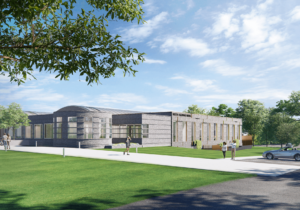Since the Victorian age, London’s verdant Royal Parks have been generously sprinkled with sculptural novelties. Some anachronistic artworks celebrate British empire like Memorial to the Cavalry by Adrian Jones in Hyde Park, while others are more contemporary contributions that do away with yesteryear’s chauvinist bells and whistles.
This week, a sculpture by Gerhard Richter, STRIP-TOWER, opened to the public. The installation is sited on the plinth at Serpentine South in Kensington Gardens. STRIP-TOWER represents Richter’s second installation at Serpentine: His first came in 2008 with 4900 Colours.

STRIP-TOWER expands on Richter’s six decades in practice. From his studio in Cologne, Germany, Richter’s paintings, photography, digital reproductions, and abstractions have captured the art world by storm.
Richter, a world famous German artist born in 1932, completed STRIP-TOWER specifically for Kensington Gardens. The structure is cruciform-shaped, indirectly recalling structures by Ludwig Hilberseimer from the 1920s, and other high-modern edifices.
Certainly, Richter’s polychromatic, minimalist ensemble stands out from its equestrian neighbors spread throughout the Royal Parks, a public utility founded by King Charles I in 1637.

STRIP-TOWER, curators said, traces its thinking back to a 1990 painting by Richter, entitled Abstract Painting 724-4. There, Richter made a “squeegee painting” that was then photographed, and then the photograph itself was digitally manipulated and sliced into two strips, then four strips, then eight, sixteen, and thirty-two. The vertical strips, curators continued, were then stretched across a horizontal expanse and subsequently laminated onto aluminum with Perspex.
The studies that began in 1990 later informed another series by Richter, which began in 2010, entitled Strip Paintings. Thus, the installation that debuted today in Kensington Gardens is the latest from this series.
Curators note that this latest work employs a similar method to Richter’s earlier studies. It features colorful striped ceramic tiles clad with two perpendicular panels. The thin vertical stripes create a dense composition where the intersecting panels create a cross section that invites observers to stand within.
STRIP-TOWER is on view through October 27.










